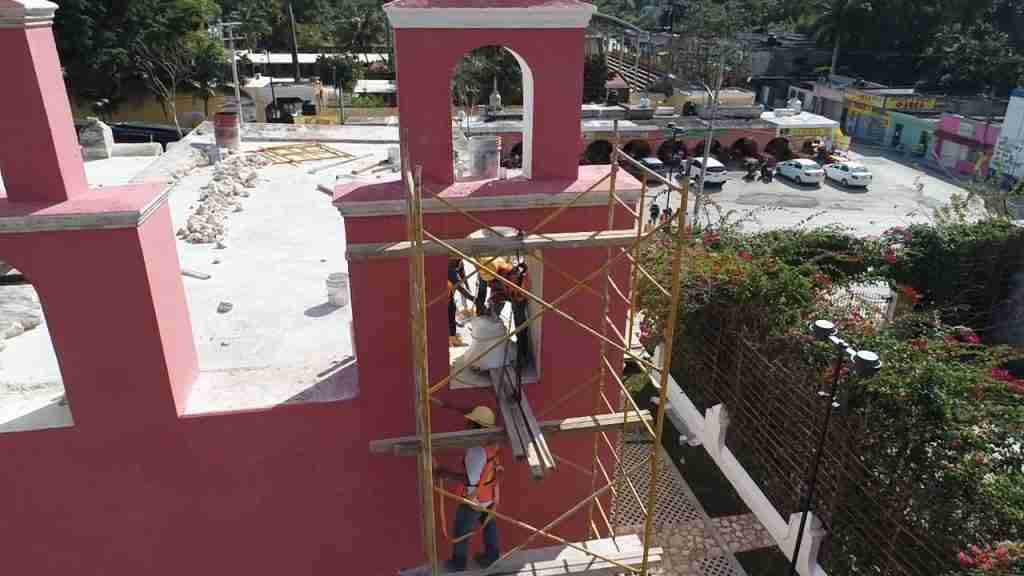The Temple of Our Lady of the Immaculate Conception has achieved importance by discovering Maya vestiges in the enclosure, in addition to being a point used by a military detachment used during the Maya Social War or Caste War.
(PISTE, YUC. – INAH).- As part of the recovery work of the Chapel of Our Lady of the Immaculate Conception of Piste, the National Institute of Anthropology and History (INAH) together with the Archdiocese of Yucatan AR are carrying out an intervention on the bell that belongs to this old church and dating from the nineteenth century.
The works carried out by the federal authority have made it possible to restore this ancient construction built around 1734, which was completed with stones and Maya remains extracted from the archaeological zone of Chichen Itzá.
The dependency highlighted that work is progressing to recover the chapel that remained abandoned for a long time and at this time it was the task of rescuing the bell that belonged to the old Chapel, which is currently being restored too.
According to the INAH-Yucatán, the bronze bell weighing approximately 60 kilograms, was located in the east tower of the construction that will now receive maintenance, to be later returned to its site where it has remained for about 180 years.
Claudia García Solís, assigned to the Conservation and Restoration Section of the INAH Yucatán Center, is the supervisor responsible for the work carried out in this construction and highlighted the work for cleaning some archaeological and historical elements that have various inscriptions.

(Photo: Yucatan ahora)
She explained that these paintings and traces have appeared on the walls of this historical complex, among which some pre-Hispanic carved stones stand out that were part of buildings belonging to the archaeological zone of Chichen Itzá, from where they were taken to complete the religious construction.
She stated that the work for the care and protection of the Historical Heritage includes the intervention and recovery of these sites of great value, in this case, the bell was removed by INAH personnel and transferred to the conservation center where it will receive maintenance.
Derived from the great historical importance of the religious complex, it is expected that said space will be used as a Site Museum by INAH, with the aim that the community strengthen its collective identity and have a new cultural and tourist attraction, for the benefit of citizenship.
The findings made in 2021 came to light with the urban improvement works in the center of the town, which have allowed the detailed registration of the foundations of both buildings, which were abandoned towards the end of the 19th century, due to the aforementioned armed conflict.
TYT Newsroom


